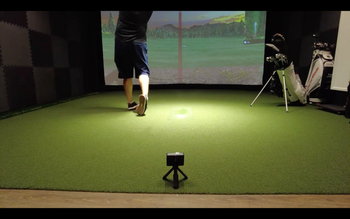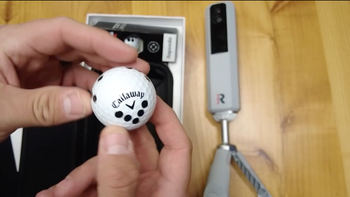So you're a mid handicapper when your index falls between 10.1 and 19.9, and you're shooting somewhere in the 85-95 range most days. Let's break it down: you're making about 7-8 bogeys each round with maybe a birdie here and there, finding just 4 greens in regulation, and yeah, those three-putts happen more than you'd prefer! Your drives go 210-260 yards, though consistency's all over the place. Sound like your game? Then you've identified your skill bracket, and we've got tons more revelations about reaching your full potential.
Table of Contents
Breaking Down Handicap Index Brackets and Categories
Think of golf handicaps like rankings in your favorite mobile game; they show you precisely how you stack up against everyone else. Let me explain the breakdown: scratch players (0 or lower) are basically the pros who can match par round after round. Low handicaps run from 0.1 to 10.0, and these folks regularly break par or come close. Mid handicaps land in the 10.1-19.9 zone, that's players who shoot around bogey golf or a bit better. The system figures out your Handicap Index by taking the average of your top Score Differentials from recent play, so it's a solid reflection of your actual skill. High handicaps cover 20.0 to 36.0 for the average player. Check this out: more than 80% of American golfers carry handicaps over 10.0! So if you're hanging out in the 10.1-19.9 bracket, you're actually rolling with about 30-40% of country club members. The USGA considers a "Bogey Golfer" someone with an Index around 20 for guys and 24 for ladies.

Working Out Your Handicap Through the World System
You've gotta nail down your exact handicap index using the World Handicap System before determining whether you're really a mid handicapper. Good news it's easier than you imagine! The process grabs your last 20 rounds, pulls out your top 8 score differentials, and finds their average. Just need three full rounds to get going.
Here's how each differential gets calculated: (total score - course rating) x 113 / slope rating. Relax, the GHIN app handles the number crunching! Your index refreshes regularly with fresh scores, and they've built in protections that kick in when you fire an unusually exceptional round. The formula accepts tournament and casual rounds alike for figuring your index. Got less than 20 rounds logged? No problem, the calculation works with what you've got and makes the right tweaks for your index.
Looking at Your Scoring Trends and Steadiness
Your scorecard reveals the truth; it shows a clear image of your golfing abilities. Mid-handicappers typically rack up about 7.7 bogeys each round, plus maybe 0.5 birdies thrown in. Here's what matters: steadiness is what divides mid-handicappers from scratch players way more than hitting one astounding shot.
Your scores likely bounce around based on how many pars versus bogeys you card per outing. You'll fire an 85 today, then post a 93 tomorrow, that's textbook mid-handicapper behavior! Want the secret? Work on cutting down bogeys instead of hunting for birdies. Research covering 15,000 players shows this method creates more reliable score drops than going for broke on birdie chances.
Making 6-8 bogeys each round while finding it tough to hit greens (just 23% versus scratch players' almost perfect stats)? You're definitely mid-handicapper material. Mid-level players also rack up 2.9 doubles or worse each round, which really damages their score potential.
Measuring Yourself Against Course and Slope Numbers
Can you really gauge your golf skills when each track throws different obstacles at you? Understanding your performance means checking your scores versus course and slope numbers. Course rating shows what a scratch player ought to shoot when it reads 71.4; that's what someone playing at par should post. Slope rating indicates how much tougher things get for higher handicaps, running from 55 to 155, where 113 equals standard difficulty.
Here's your benchmark: match your regular scores against these numbers. Shooting 8-12 over the course rating on standard-slope tracks? You're probably mid-handicapper level. This method factors in how tough the course plays and delivers an honest look at your abilities. Distance and hazards impact higher handicappers way more than skilled players who manage course tests better. Trained evaluators check hundreds of course elements to set these ratings for precise difficulty levels.

Spotting Mid Handicap Patterns in Your Play
After grasping course ratings, you'll easily spot mid-handicapper signs in your game. You're probably finding around 42-48% of fairways and reaching just 4 greens per round. Your drives travel 210-260 yards, a decent distance, though accuracy is hit or miss. Get this, your approaches usually finish about 35 feet from the cup, so birdie putts stay pretty scarce. You'll post scores in the 80s regularly and sometimes sneak into the high 70s when everything clicks, though breaking 80 consistently stays tough. Three-putts show up too often, and you'll card anywhere from 85-95 based on course setup. Your scrambling from around greens hovers near 26%, which shows why missed greens usually mean bogey or worse. Knowing these performance numbers lets you monitor progress and build smarter practice plans.
Following Your Differential Numbers Through Several Rounds
As you work on figuring out your real ability, monitoring handicap differentials gives you the best gauge of steady play. Consider this: differentials reveal your performance versus par through this calculation: (Adjusted Total Score - Course Rating) x 113 ÷ Slope Rating.
Record all your rounds since trends appear gradually. You might always battle on tracks with big slope numbers, or wind could mess with your scores worse than expected. The system picks your top 8 differentials from your previous 20 rounds, then takes 96% of that average for your actual index.
These numbers guide you toward suitable courses and highlight weak spots. Mid handicappers usually post differentials between 10-20, offering you a solid target!
Matching Your Abilities Against Different Handicap Groups
After monitoring your differentials and building a clear image of your playing trends, seeing how you compare with fellow golfers gets easier. Consider this: mid handicappers (index 11-20) occupy the space between two separate ability groups. Low handicaps stay under 10 shots from par and seldom implode on holes, but high handicaps battle with basics like making solid contact and simple course tactics.
You're probably mid-level when you're building course smarts, though rounds stay unpredictable. Low handicaps play tour-level gear and memorize course subtleties, but high handicaps keep testing different options. Mid handicaps land right between you,u get course tactics, though execution needs work!
Applying Fair Stroke Limits to Find Your Real Skill

We've all played rounds where a few terrible holes wrecked our score, leaving us questioning whether our handicap shows our real game. Enter Equitable Stroke Control! It puts a ceiling on your bad scores to reveal your typical playing standard.
Check out the system: mid handicappers carrying course handicaps from 10-19 can't post anything over 7 on any hole for index calculations. Even when you write down a 9 on that monster par-4, it becomes a 7.
This rule stops those explosion holes from jacking up your handicap unfairly. Use ESC on your latest scores, and you'll reveal a truer measure of your regular playing strength!
Frequently Asked Questions
What's the Timeline for Going From Mid to Low Handicap?
Dropping from mid to low handicap usually needs over six months, though listen—your method makes all the difference. Playing roughly 1.6 rounds weekly plus dedicated practice beats just playing more golf. Track everything carefully, and you might shave off 3.4 strokes! Your commitment and smart practice count most.
Which Gear Upgrades Matter Most for Mid Handicappers?
Start with game-improvement cavity backs—they'll change your consistency game! Switch those 3 and 4 irons for hybrids because they're way friendlier from bad spots. Get custom-fit lighter shafts for better speed and precision. Grab a gap wedge to fill that distance void between pitching and sand wedges. Ultimately, pick up a forgiving putter with high MOI for improved alignment on essential short rolls.
Distance or Short Game - What's the Priority?
Put short game precision ahead of bombing drives. Here's the deal: sharpening your chips, pitches, and putts usually saves strokes quicker than gaining distance. Mid handicappers drive about 200 yards, but you'll drop more shots by scrambling reliably. Spend 70% of practice on short game—that's where scores plummet fastest!
What's the Right Playing Frequency to Hold Your Handicap?
Play minimum once weekly to keep your mid-handicap steady. Weekly golf maintains your swing groove and stops skills from getting rusty. Can't get out that much? Add dedicated short game and putting work. Two rounds weekly works even better for staying sharp, though one round plus smart practice keeps your index stable.
Which Mind Games Work for Mid Handicappers Under Tournament Heat?
Build a steady pre-round process that calms you when tension rises. Take full breaths after shots and talk yourself up rather than getting down. Envision great shots before swinging, and remember—think about your technique, not your score! Use smart, safe plays that avoid disasters when feeling the heat.
The Bottom Line
There you have it, everything needed to confirm you're a genuine mid-handicapper! An index sitting at 10-20, averaging 82-92 on typical courses, and finding roughly half your fairways means you're right where you belong. No worries if you drift between levels, indexes move around naturally. Just monitor those differentials, score honestly, and you'll always understand your position.





